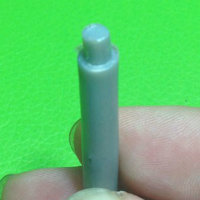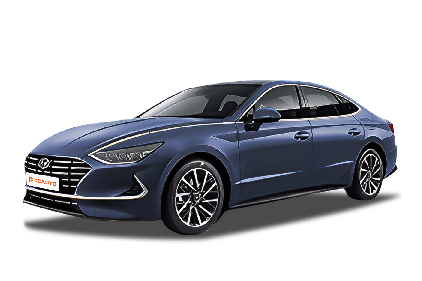Q
Is Sonata faster than Civic?
To determine whether the Sonata is faster than the Civic, you need to compare the power parameters of specific models. Take the 2020 Hyundai Sonata 2.5 Premium as an example. Its maximum speed can reach 210 km/h. However, relevant data for the Civic models are not available for comparison at the moment. A vehicle's speed performance depends not only on the maximum speed but also on the acceleration performance. Usually, factors such as the engine power, torque, and the transmission of the vehicle will affect the speed performance. Different versions of the models may have different speed performances due to various configurations. If you want to know exactly which one is faster, it is recommended to check the detailed parameters of specific models or refer to professional automotive reviews. In this way, you can get more accurate information to judge the speed difference between the two.
Special Disclaimer: This content is published by users and does not represent the views or position of PCauto.
Related Q&A
Q
What is the life expectancy of Hyundai Sonata Hybrid?
The service life of the Hyundai Sonata Hybrid can vary depending on multiple factors. Generally speaking, the battery of the Sonata Hybrid usually lasts about 5 years. As for other components, Hyundai offers a 5 - year or 300,000 - kilometer warranty for the whole vehicle, which reflects the expected durability of the vehicle under normal use conditions. The warranty periods for some core components, such as the power battery assembly, drive motor assembly, motor controller assembly, and vehicle controller assembly, are even longer, sometimes up to 8 years or 150,000 kilometers. Regular maintenance, good driving habits, and usage conditions all play important roles. If properly maintained, serviced on time, and driven carefully, this car has the potential to serve you for over 10 years and cover a mileage of as much as 200,000 kilometers or more.
Q
Which model of Hyundai Sonata is the most expensive ?
Currently, the most expensive model of Hyundai Sonata in Malaysia is the Sonata N-Line version, with an official price of approximately RM218,888 (excluding insurance). This high-performance version is equipped with a 2.5L Turbo GDi four-cylinder engine, capable of outputting 290 horsepower and 422 Nm of torque. Paired with an 8-speed wet dual-clutch transmission and front-wheel drive, it can accelerate from 0 - 100 km/h in just 6.2 seconds.
Compared with the standard Sonata (equipped with a 1.6L Turbo or 2.0L naturally aspirated engine), in addition to its powerful performance, the N-Line is equipped with a sport-tuned suspension, 19-inch wheels, an exclusive N Line exterior kit (including a more aggressive aerodynamic design and quad exhaust pipes), and an all-black interior with red stitching, giving it an overall sporty coupe style.
Although it's price is high, the N-Line version offers a comprehensive configurations, including the advanced Hyundai SmartSense active safety system (such as SCC Smart Cruise Control and FCA Forward Collision Warning), a panoramic sunroof, and a Bose sound system. It's a great choice for consumers who seek both performance and luxury.
Q
How about the speed performance of Hyundai Sonata?
The speed performance varies among different models of the Sonata. The top speed of the 2020 Hyundai Sonata 2.5 Premium can reach 210 km/h, while the top speeds of the 2017 Hyundai Sonata 2.0 Elegance and Hyundai Sonata 2.0 Executive are 200 km/h. These figures reflect the vehicle's potential in terms of power performance. However, in actual driving, it's difficult to reach the vehicle's top speed due to factors such as road conditions, traffic regulations, and driving behavior. For example, the speed limits on ordinary city roads are usually quite low. Although the speed limits on highways are relatively higher, it's not allowed to speed at will. It is recommended that everyone abide by the regulations while driving, reasonably control the speed according to the actual situation, and ensure driving safety.
Q
What's the engine displacement of Hyundai Sonata?
Different models of Sonata have various engine displacements. For example, the 2020 Hyundai Sonata 2.5 Premium is equipped with an engine with a displacement of 2497cc, which can provide ample power to meet the needs of daily driving and some driving scenarios with power requirements. As for the 2017 Hyundai Sonata 2.0 Elegance and Hyundai Sonata 2.0 Executive, their engines have a displacement of 1999cc. Relatively speaking, they may perform better in terms of fuel economy and can also provide stable power output for the vehicle. Engines with different displacements each have their own characteristics. Consumers can choose the model that suits them according to their own driving habits, such as the demand for power and considerations regarding fuel consumption.
Q
What's the service life of Hyundai Sonata's spark plugs?
The service life of the Hyundai Sonata's spark plugs depends on their types. The more affordable nickel alloy spark plugs typically last about 20,000 - 30,000 kilometers. Platinum spark plugs, with better heat and corrosion resistance, can be used for 60,000 - 80,000 kilometers. Iridium spark plugs, known for their high ignition performance, usually have a service life of 80,000 - 100,000 kilometers or even longer.
However, other factors can also have an impact. If the vehicle often drives under harsh conditions such as extreme temperatures, high humidity, and dusty areas, or experiences frequent starting and stopping, the spark plugs may wear out more quickly. Aggressive driving habits like rapid acceleration and hard braking can also increase the engine load and accelerate the aging of the spark plugs. Therefore, although the above are general reference standards, it's very important to regularly check the condition of the spark plugs and follow the vehicle maintenance manual for optimal performance.
Q
Does Hyundai Sonata have spark plug wires?
Yes, Hyundai Sonata is equipped with spark plugs, but it doesn't have the traditional externally exposed spark plug wires. Spark plugs are crucial components in the engine's ignition system, as they generate electric sparks to ignite the air - fuel mixture in the engine's combustion chamber, enabling the engine to operate properly.
With the development of modern automotive technology, many vehicles, including the Hyundai Sonata, have adopted the Distributorless Ignition System (DIS) or the Direct Ignition System (DI). In these systems, the ignition coils are directly installed on top of the spark plugs, providing high - voltage electricity directly to the spark plugs. They no longer rely on the traditional long spark plug wires to transmit high - voltage electricity.
This design reduces electromagnetic interference, improves ignition efficiency and engine performance, and also decreases the likelihood of spark plug wire failures, such as electrical leakage and aging. At the same time, it enhances the overall reliability of the vehicle and its fuel economy.
Q
How many cylinders does Hyundai Sonata have?
Whether it's the regular version or the N-Line version, the Sonata features a 4-cylinder (inline-four) engine layout, which is also a common engine configuration for mainstream mid-size sedans these days. This setup can not only deliver decent power output but also balance it with fuel efficiency. Hyundai has invested lot in developing turbocharged engine technology in recent years. For example, the SmartStream series of engines has optimized combustion efficiency and reduced emissions, enabling the four-cylinder engine to achieve performance comparable to that of a six-cylinder engine. If car owners prefer more potent power, they might need to consider higher-end rear-wheel-drive or all-wheel-drive performance cars. However, for general family use or mild sporty driving needs, the 1.6T or 2.5T four-cylinder engines are good enough for daily driving and highway cruising.
Q
How much does it cost to change Hyundai Sonata's spark plugs ?
The cost of replacing the spark plugs of Hyundai Sonata ranges from approximately RM200 to RM500, depending on the model year, engine type (1.6T or 2.5T), and the brand of spark plugs used (such as NGK, Denso, or original factory parts). A standard 1.6L Turbo engine usually uses iridium or platinum spark plugs, which cost around RM50 to RM150 each. On the other hand, the 2.5L Turbo engine (N - Line version) may require higher - performance spark plugs, which are slightly more expensive (around RM80 to RM200 each).
In addition, labor costs typically range from RM80 to RM150. Dealerships may charge more, providing factory - certified parts. Third - party repair shops offer lower prices, but you need to make sure the technicians perform well in the operation.
The spark plug replacement interval for the Hyundai Sonata is generally between 60,000 and 100,000 kilometers. However, if your vehicle experiences vibrations, has difficulty starting in cold weather, or shows an increase in fuel consumption, you may need to check the spark plugs earlier. It's recommended that owners have technicians inspect the spark plugs during regular maintenance and choose high - quality spark plugs that can withstand high temperatures and resist carbon deposits to ensure optimal engine combustion efficiency.
Q
How many spark plugs does Hyundai Sonata have?
Hyundai Sonata usually has four spark plugs. This is because most Sonata models are equipped with four-cylinder engines, and in gasoline engines, each cylinder is typically assigned one spark plug. Spark plugs play a crucial role in the operation of the engine. They are responsible for igniting the air-fuel mixture in the cylinders, enabling the engine to generate power. For example, the 2020 Hyundai Sonata 2.5 Premium and the 2017 Hyundai Sonata 2.0 Elegance/Executive models are both equipped with four-cylinder engines, and these models all have four spark plugs. Regularly inspecting and timely replacing the spark plugs according to the vehicle's maintenance schedule helps ensure smooth engine operation, good fuel efficiency, and reliable vehicle performance.
Q
How often should I change the spark plugs in my Hyundai Sonata?
The frequency of replacing the spark plugs in your Hyundai Sonata depends on the type of spark plugs installed. Nickel alloy spark plugs are affordable, but they have a short service life. You should consider replacing spark plugs when the vehicle has traveled about 20,000 - 30,000 kilometers. Platinum spark plugs are known for their good heat resistance and corrosion resistance and can be used for 60,000 - 80,000 kilometers. Iridium spark plugs have high ignition performance, and their service life is generally 80,000 - 100,000 kilometers or even longer.
In addition, the operating conditions of the vehicle also affects the service life of spark plugs. If you often drive in harsh environments such as extreme heat, humidity, and dust, or frequently start and stop the vehicle, or have a habit of aggressive driving, the spark plugs may wear out fast, and you may need to replace them early. Regularly refer to the vehicle's owner's manual, as it may provide more specific guidance for your Sonata model.
Latest Q&A
Q
How much is a 2020 Toyota RAV4 worth today?
The 2020 Toyota RAV4 is currently fetching around RM100,000 to RM140,000 on the used car market. Prices can vary depending on condition, mileage, trim level, and service history, with high-spec hybrid or top-of-the-line models potentially edging closer to RM150,000. It's a common sight locally, popular for its reliable build and low maintenance costs – especially the 2.0L naturally aspirated and hybrid variants, which stand out for fuel efficiency. The used car market generally agrees the RAV4 holds its value well. Before buying, it's smart to get a professional inspection to check the vehicle's condition and compare quotes from multiple dealers to land a fair price. Also, the current RAV4 sits on the TNGA platform, offering noticeably better handling and safety than its predecessor. If your budget allows, it's worth checking out new car deals too – some dealers might have attractive trade-in offers.
Q
What kind of engine does a 2020 RAV4 have?
The 2020 RAV4 offers two engine options depending on market and trim level: a 2.0-liter naturally aspirated four-cylinder and a 2.5-liter hybrid system. The 2.0L engine puts out around 170 horsepower, paired with a CVT transmission, focusing on fuel efficiency and smooth driving—perfect for daily city commutes. The 2.5L hybrid, on the other hand, combines a gas engine with an electric motor for a total output of 218 horsepower. It delivers even better fuel economy and adds an electronic all-wheel-drive option, balancing power with eco-friendly needs.
Toyota's Dynamic Force engine series under the hood uses advanced tech like high-speed combustion and variable cooling systems, hitting industry-leading thermal efficiency. Hybrid models also come with Toyota's fourth-gen THS-II system, which optimizes power distribution through the PCU (Power Control Unit).
Notably, the engine bay layout was redesigned to lower the center of gravity, boosting handling stability, while extra sound insulation improves NVH performance. For buyers watching long-term costs, both engines reflect Toyota's focus on durability, with reasonable maintenance intervals and easy access to replacement parts.
Q
How much should I pay for a 2020 RAV4?
The 2020 Toyota RAV4 typically ranges in price from RM90,000 to RM130,000 in the used car market. The exact price depends on factors like vehicle condition, mileage, trim level, and whether it's still under the original factory warranty. Higher-spec hybrid models or those with optional features like a panoramic sunroof will command higher prices. It's advisable to check specific listings through officially certified pre-owned channels or reputable dealers before buying. Make sure to inspect the maintenance records and accident history to ensure the vehicle is in good condition. As a popular SUV, the RAV4 holds its value relatively well, thanks to Toyota's brand reputation and the model's reliability. Its active safety systems, such as pre-collision system and lane-keeping assist, also boost its appeal. If your budget is tight, consider slightly older models with lower mileage—they offer better value for money. However, always get a professional inspection to avoid potential issues. Also, when comparing prices, don't forget to factor in additional costs like insurance, road tax, and transfer fees into your total budget.
Q
How many miles can a 2020 Toyota RAV4 last?
The 2020 Toyota RAV4 can typically hit 200,000 to 300,000 miles (around 320,000 to 480,000 kilometers) or even more with proper maintenance and regular use. Its lifespan really depends on things like driving habits, road conditions, and how often you keep up with servicing. That 2.5-liter four-cylinder engine and hybrid system are known for being tough – especially if you stay on top of oil changes, transmission fluid swaps, and keeping the cooling system clean, that’ll definitely help it go the distance. It’s worth mentioning that the hybrid battery usually lasts about 10 to 15 years, but once you replace it, the vehicle can keep rolling. In daily driving, avoiding hard acceleration and frequent sudden stops, plus checking tires, brakes, and suspension parts regularly, will cut down on wear and tear. Also, sticking to authorized repair shops and using OEM or high-quality parts for maintenance goes a long way in keeping the RAV4 performing well. If you’re driving a lot in hot or dusty environments, you’ll want to shorten the replacement intervals for the air filter and coolant to make sure the engine runs efficiently.
Q
Does the 2020 RAV4 have automatic braking?
The 2020 RAV4 does come with Automatic Emergency Braking (AEB) as part of Toyota's TSS 2.0 active safety suite. This system uses cameras and radar to detect vehicles or pedestrians ahead, automatically applying the brakes if a collision seems likely to either reduce impact severity or avoid the accident altogether. Beyond AEB, TSS 2.0 also includes adaptive cruise control, lane keeping assist, and automatic high beams—features that really boost safety in day-to-day driving. It’s worth noting, though, that AEB performance can be affected by speed, weather, and road conditions, so drivers still need to stay focused and can’t rely entirely on the system. If you’re thinking about buying a used 2020 RAV4, it’s a good idea to check that the system is working properly and find out if the previous owner made any adjustments to the settings, since some functions can be manually turned off or have their sensitivity customized. As car safety tech advances, features like AEB have become standard on many new vehicles, but system names and performance can vary a bit between brands—definitely compare and test drive a few options before making a purchase.
View MoreRelated News

In Malaysia, which sliding door MPVs are available?
MichaelOct 30, 2025

Modern Ioniq 5 N Lands in Malaysia: Track-Level Performance Electric Vehicle is Here, Priced Possibly Below RM 400,000?
JohnSep 10, 2025

Hyundai's Big Return to Malaysia: Top 5 Models Expected
MichaelMay 30, 2025

580,000 km & 87.7% Battery Health: Ioniq 5’s Incredible Durability
MichaelMay 6, 2025

Revolutionizing Hybrids: Hyundai’s New System vs. Toyota's Hybrid System
Kevin WongApr 22, 2025
View More

















Pros
Cons